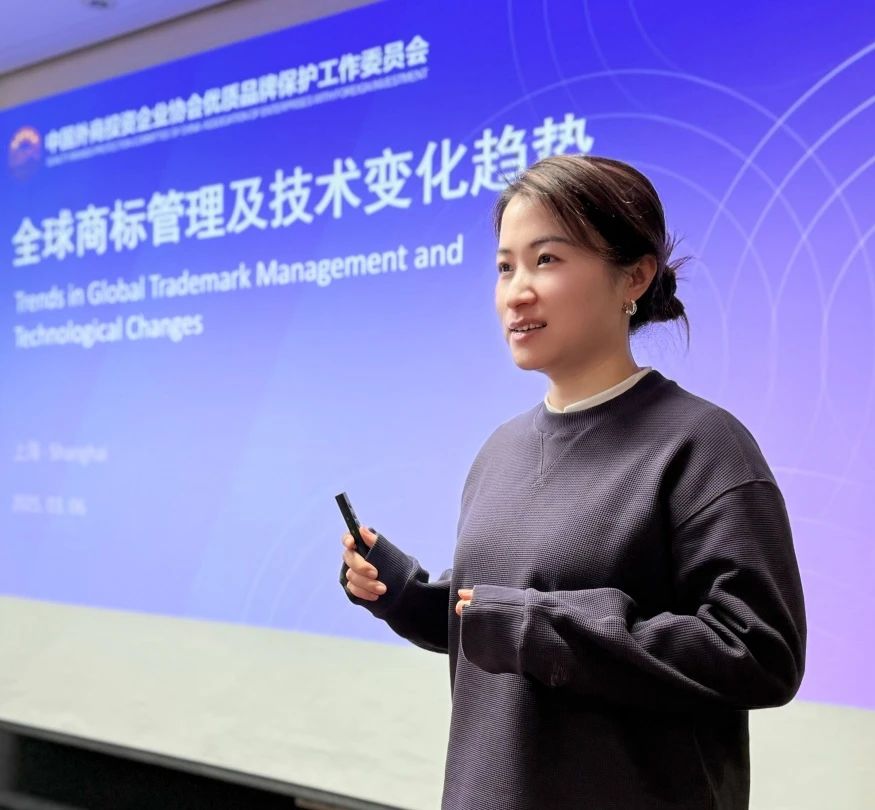As the outbound expansion continues and large-scale AI models emerge, the management and protection of trademark brands are undergoing significant transformations. The transparency of industry big data will be improved significantly while the implementation of intelligent algorithms is expected to substantially enhance operational efficiency. On March 6, QBPC invited industry experts to share their insights on the trends in global trademark management and technological changes. The seminar was moderated by Amelie Chen, Vice Chair responsible for legal affairs, with over 90 QBPC members participating both on site and online.

Sally Wang introduced key strategies for global trademark management, highlighting the importance for companies to align their strategic goals with proactive planning and resource optimization. Through hierarchical management, companies should prioritize the protection of their core brands and enhance safeguards in critical markets. When addressing extensive trademark issues, companies need to enhance risk prevention and control through various measures, including preliminary searches, compliance reviews, and addressing trademark squatting and counterfeiting. In a dynamic management environment, digital tools should be utilized to monitor trademark lifecycles, create evidence databases, and collaborate with both internal and external stakeholders to ensure timely maintenance and renewal of rights. Furthermore, companies must be adaptable to shifts in the international political and legal environment that could impact trademark strategies. According to the needs of business, trademark managers should boost brand awareness through professional services and internal training, and create strong synergy between trademark assets and corporate growth through proactive thinking while balancing risk management with commercial value.

Zhang Rui focused on the transformation of trademark management and protection in the era of AI large models, emphasizing the significant influence of AI technologies on trademark searches, risk monitoring, legal document creation, and enforcement strategies. By reviewing recent statistics on international companies’ trademark applications in China, he observed that the U.S., the U.K. and Japan lead in consumer trademark filings. Although the total number of applications is decreasing, there has been growth in certain sectors such as healthcare and cosmetics. Through case studies, he highlighted the necessity of aligning trademarks with trade names as well as the supportive role of AI image recognition in detecting infringements. In terms of technology application, AI can automate trademark searches, analyze rejections, compile evidence, and monitor global compliance, significantly improving efficiency and lowering labor costs. Nonetheless, professional judgment was crucial for managing risks. He stressed that future trademark management should incorporate big data and AI tools to create dynamic risk control systems while ensuring regulatory compliance and evidence preservation to tackle the fast-changing business environment and legal challenges.

In the Q&A session, guest speakers answered the questions raised by the participants, such as the current status and future plans of the China National Intellectual Property Administration regarding AI tools usage, and strategies for optimizing trademark protection on a tight budget, etc.
